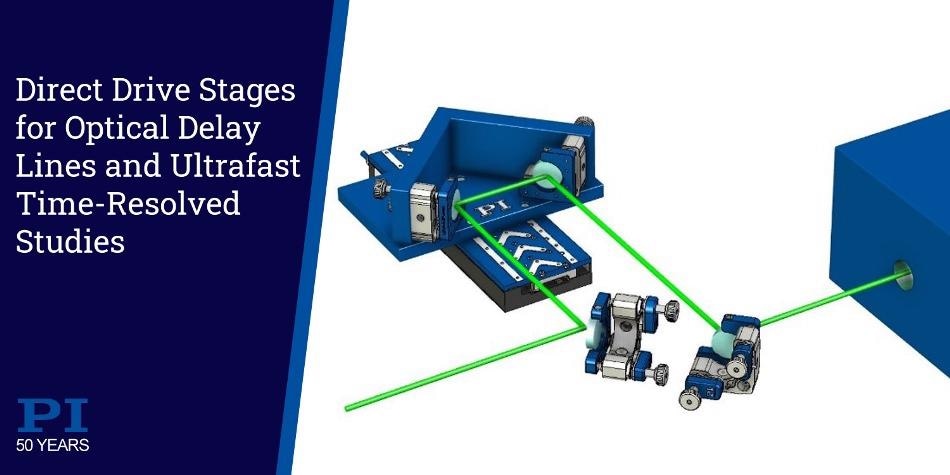PI’s V-508 direct drive linear stage family has many properties that make it an ideal candidate for high precision optical delay lines. The direct drive linear motor provides minimum incremental motion of 1 nm, equivalent to ~7 attoseconds of delay. This performance is made possible by an interferometric type linear encoder that provides 20 picometers resolution. The maximum optical delay the V-508 stage can provide is 1668 ps, larger PI linear stage models can achieve up to 8000 picoseconds.

Image Credit: PI
Why Small Time Increments Matter?
Time-resolved, ultrafast spectroscopy allows a very close and precise look at dynamic processes in materials and chemical compounds. With the help of ultra-short pulse lasers, changes on an incredibly small time scale down to the attosecond range can be made visible. The importance of high position resolution and accuracy in a high performance optical delay line stage is obvious, when you consider that step of only 10 nanometers (in a free space optical delay line) adds a delay of ~.07 femtoseconds. Nanopositioning capabilities are essential, when reproducible delay in the Femtosecond and Attosecond range is required.
Minimum Incremental Motion and its Importance
The very fundamental influence of minimum incremental motion on Optical Delay Line time resolution makes it a guiding specification in PI motion solutions across several spectroscopy/microscopy and interferometry applications. The direct-drive design and direct metrology encoder with picometer resolution eliminate drive train errors such as backlash, play, and non-linearities often found in conventional screw-driven linear translation stages, stepper motors or geared motors. In order to provide reproducible delay increments in the time domain, the motion increments of the nanopositioning stage must be repeatable and linear. With the ironless linear motor used in the V-508 delay line stage, linearity is greatly improved due to the smooth, ripple free motion. The extremely small pitch of the optical encoder of only 0.5 µm is another factor in great linearity and minimal cyclical errors. The very low profile keeps the distance between the stage base and the functional point of the retroreflectors at a minimum, further reducing geometric errors.
More on Optical Delay Line Stages and how they work»